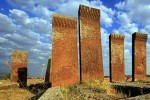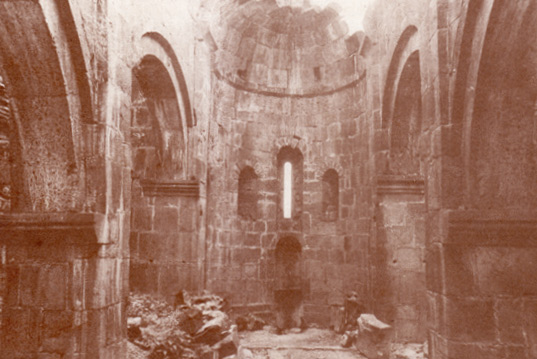The Seljuk Turks originated from the Qynyk branch of the Oghuz Turks and are named under their ruler Seljuk. According to the 11th-century famous scholar Mahmud al-Kashgari, the borders of today’s Afghanistan still in the 7th century were inhabited with 24 Oghuz tribes. During the time these tribes, being exposed to different religious streams, in the timeframe 920 – 960, however, converted to Islam. This was done under the influence ofArab population, which was then dominant in Central Asia. The adoption of Islam strengthens their position in the region and lays the basis for their further conquests. Seljuk state gradually formed in 10-11th centuries on a territorycomprising lands from Asia Minor to India, but in the 11th century it started to fragment into separate sultanates and emiratesas a result of internal dissent and struggle for the throne.
Turning to the issue of Seljuk art, one must note the importance of its further research, as under this dynastic-ethnic term there’s one of the most interesting periods of Oriental art which is remarkable for the big number and diversity of its monuments. More than two centuries this art has been developing on a territory comprising Asia Minor, Transcaucasia, Iran and the rest of Central Asia. The discussed issue becomes more essential considering the fact that numerous nations contributed to the erection of these monuments but they are all called “Seljuk monuments”.
This and following essays will touch the history of Seljuk art, particularly those pages, which concern its relationship with Armenian art. The abundance and high quality of Armenian architectural and sculptural forms in Seljuk art are due to the role, which Armenian masters, who had fled to Asia Minor from northern and eastern regions of Armenia, had in the creation of these monuments.
The art created during the reign of Seljuk Turks has a variety of forms. This concerns especially their architecture. Depending on the location of discussed monuments, one can clearly see the overall and dominant shapes typical for the local art of earlier periods.
The connections of Seljuk monuments with the Armenian and Georgian architecture have been a topic of discussion for a long time.Some particular examples seem to be direct reproductions of Armenian forms1.
This era gave the world excellent architects, whose Armenian names are engraved with Arabic letters on the buildings of Seljuk Sultanate of Rum. This era also gave the world experienced masters, who used to repeat their ornaments on Muslim mosques or on the Gavits of Armenian churches.
And perhaps the term “Seljuk” relating to the art created in the discussed period and areas to some extent can be considered relative, since Seljuk Turks, being the conquerors, were greatly influenced by the advanced civilization of the subordinates.
The assumption, that the monuments created on ancient Armenian territories of the Caucasus and Asia Minor in the era of Seljuks were the work of artists who had come from other lands and had brought with them diverse artistic forms, has no sufficient basis. The further development of Ottoman art from the Seljuk and Byzantine roots does not provide a basis to consider this art Turkish or Turkic2.
To be continued!
Sources:
- Якобсон, А. Л., Сельджукские отклики на темы армянской средневековой архитектуры, Историко-филологический журнал, № 4, 1983, стр.127
- Орбели И., Проблема Сельджукского искусства, II Международный симпозиум по армянскому искусству, Академия наук Армянской ССР, Институт Искусств, Ереван, 1978, стр. 10-11
Translated from Armenian.









Leave a Reply